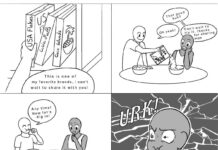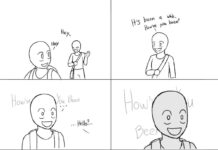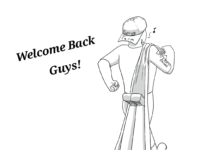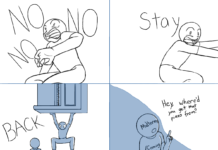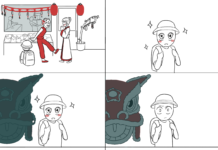It’s obvious that the superhero genre has a rich history behind it dating all the way back to the times of early man. Now, we are going to take a look at the trends this genre has taken that lead us to where we are now and what the future might hold.
As superheroes were being brought to the big screen for the first time as Saturday Serials, everything was fair game given that these characters were fairly new. For example, Republic’s Captain America serial wasn’t set in Germany during World War II like the comics but set in an American city. In addition to that, Cap himself wasn’t a US Army Private named Steve Rogers, but a district attorney turned vigilante named Grant Gardner. Now if such liberties were taken in the upcoming Captain America: The First Avenger, there would be a huge public outcry.
As time passed and long running continuities were established, it became a bit more difficult to produce high grossing films based on these characters. This is what resulted in many of these characters moving from the big screen to the small screen, first with Adventures of Superman, then Batman and then followed by several attempts by Marvel with only one success, The Incredible Hulk.
It should be noted that liberties were still taken with the superhero shows on primetime – for example Bruce Banner’s name being changed to David Banner in the Hulk television series, whereas the Saturday morning programs stayed as faithful as possible, which is why the 90’s X-Men series is so beloved by fans.
With films that are derivative of any work of fiction, there are two or three demographics that companies look at when going through pre-production. The first demographic is the group that is familiar with the source material. The second is the demographic that both the film and source material tried to appeal to during its early inception. The third, depending on the size of the second is, essentially, everyone else.
Since most companies tend to cater towards the third demographic, what results might be heralded as one of the many disappointments of cinema, such as Joel Schumacher’s take on the dark knight in Batman and Robin and George Lucas’s Howard the Duck.
Now we all know about the classic superhero films from the 80s such as Tim Burton’s Batman, but we also know about the oft-reviled adaptations of the Fantastic Four. Not only do we fans know this, so do the comic book companies.
Now I know many of us panicked when we first heard the news of Disney buying Marvel, but so far that relationship has been nothing short of fruitful in both the comic book industry and in the film industry. It is because of this buy out that Marvel was then able to do what it had wanted to for years – to bring the many stories of their universe to the big screen – by their own hand. This resulted in the modern incarnation of Marvel Studios.
The first film produced under Marvel Studios was Iron Man, and it was the first stepping stone in creating what we now know as the Marvel Cinematic Universe. This plan became more concrete with the introduction of the Strategic Homeland Intervention, Enforcement and Logistics Division, better known as S.H.I.E.L.D., in Iron Man 2. The organization has made subsequent appearances in the Marvel films to follow, such as The Incredible Hulk, Thor and the upcoming Captain America: The First Avenger.
Hot on Marvel’s heels, DC decided to begin establishing their own cinematic universe, an easier endeavor for them given that they are owned by Warner Bros. Entertainment, Inc. However, as you may have seen in our recent Green Lantern review, this has produced mixed results.
Prior to DC’s announcement of a Justice League film, they had kept many of their franchises separate. While Superman Returns wasn’t well received by critics and fans alike, Christopher Nolan’s Batman films has helped to set a new standard for comic book movies, with The Dark Knight still reigning as the highest grossing superhero film of all time.
With a history so rich and turbulent, it begs the question of to whom the duty of bringing these characters and stories lie. Is it the production and publishing companies behind these films and characters, or is it the readers and movie-goers that pay for these stories. Marvel has proven that making theatrically successful films in-house is possible, while other superhero films produced separately, such as the Batman film trilogy, have been equally successful.
It is in this reporter’s opinion that control of these trends lie with us, the audience, both reader and movie-goer alike. The only real reason that Marvel Studios has been successful and the same reason that DC is now struggling to match that success is the fact that we pay for it. As long as there are people who pay for the tickets these films will continue to be made.
In the end, we can’t really know what future trends hold, but let’s return to the question asked in part 1, whether the responsibility for comic book movies lies with the comic companies or the film producers. In the end, it ultimately depends on the characters. For example, comic book writer Joss Whedon has been confirmed to direct The Avengers, while it was rumored that production for Green Lantern was hindered by the totalitarian approach of co-producer/writer for the comic, Geoff Johns. However, the production of these franchises becoming internal is proving to be inevitable.


